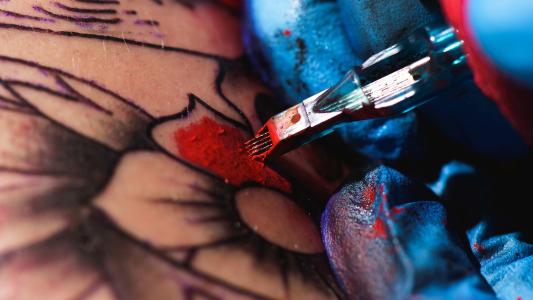A physicist and a neuroscientist teamed up to reconstruct lost art hidden beneath a famous Pablo Picasso painting, recreating it with the help of AI and 3D printing.
The lost art: Throughout this career, Picasso often reused canvases, painting over his own creations, as well as those of other artists.
In 2018, an Ontario art gallery used x-ray technology to reveal a landscape lurking below his famous work, La Miséreuse accroupie (The Crouching Woman).
The challenge: Picasso contemporary Santiago Rusiñol is believed to be the artist behind that painting, which depicts a historical garden in Barcelona.
However, the x-ray technology may have been able to reveal the basic composition of the lost art, but it wasn’t able to let anyone see what Rusiñol’s work might have actually looked like before Picasso painted over it.
The tech solution: In 2019, two University College London researchers — physicist George Cann and neuroscientist Anthony Bourached — founded Oxia Palus, an art collective on a mission to “uncover masterpieces lost to the ages using AI.”
Oxia Palus trained an AI in Rusiñol’s style using another of his artworks, Terraced Garden in Mallorca. The AI then reconstructed the lost art below Picasso’s painting in a way that might have matched the original.
Putting paint to canvas: Now, Oxia Palus has produced 100 copies of the reconstruction on canvas, using 3D printing to layer the paint in a way designed to mimic Rusiñol’s actual brush strokes.
“It’s something that hasn’t been done before and is actually a patent-pending approach for us,” Bourached told Artnet News. “The layering of this paint and ink on a canvas is pushing the state of the art in 3D print technology.”
The collective is selling the canvases through Morf Gallery for $11,111.11 each. (And because this is 2021, each painting will come with an NFT-linked code to verify its authenticity.)
First of many: Oxia Palus calls the technique used to reconstruct the lost art the “neomastic process.” The artwork itself is the first “NeoMaster” — but the collective hopes many more will follow.
“There are potentially thousands of works out there that we could see in the next few years that haven’t been seen in hundreds of years,” Cann told Artnet News.
We’d love to hear from you! If you have a comment about this article or if you have a tip for a future Freethink story, please email us at tips@freethink.com.
